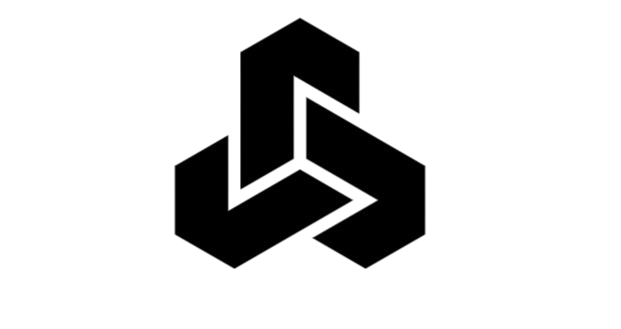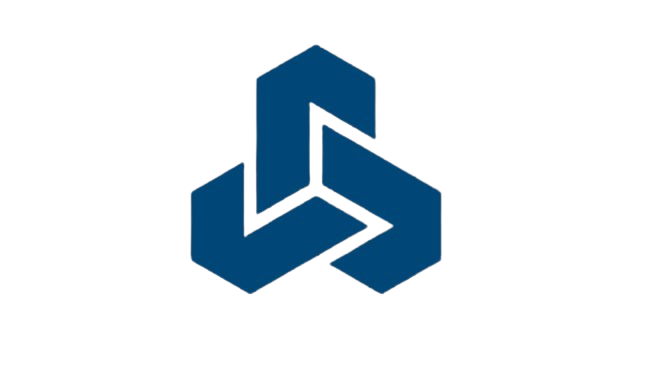The modern wellness landscape has transformed dramatically as society grapples with unprecedented levels of stress, widespread burnout, and overwhelming digital saturation that threatens mental and physical health. In 2024, healthcare professionals, corporate wellness experts, and mental health specialists recognize these interconnected challenges as defining features of contemporary life, affecting productivity, relationships, and overall quality of life across all demographics and professional sectors.
Recent studies from leading medical institutions reveal that 78% of working professionals report experiencing chronic stress symptoms, while 63% demonstrate clinical signs of burnout, representing a 40% increase from just five years ago. The World Health Organization now classifies burnout as an occupational phenomenon, acknowledging its significant impact on global health and economic productivity. Digital overload compounds these issues, with the average adult spending over 11 hours daily engaged with digital devices, creating cognitive strain that mental health professionals increasingly link to anxiety, depression, and attention disorders.
The convergence of workplace demands, technological integration, and societal pressures creates a perfect storm of wellness challenges requiring comprehensive understanding and strategic intervention. Organizations worldwide invest billions in employee wellness programs, recognizing that addressing stress, preventing burnout, and managing digital consumption directly impacts performance, retention, and healthcare costs. Understanding these modern wellness challenges empowers individuals and organizations to develop effective strategies for maintaining health and vitality in an increasingly demanding world.
Understanding Modern Stress: Beyond Traditional Stressors
The Evolution of Stress in Contemporary Society
Modern stress differs fundamentally from traditional stressors our ancestors faced, characterized by chronic, low-grade activation rather than acute, resolvable threats. The contemporary stress response system, designed for immediate physical dangers, now responds continuously to psychological pressures including work deadlines, financial concerns, social media comparisons, and information overload. This mismatch between evolutionary stress responses and modern triggers creates persistent physiological activation that undermines health across multiple systems.
Neurobiological research demonstrates that chronic stress fundamentally alters brain structure and function, particularly affecting the prefrontal cortex responsible for executive function and the hippocampus crucial for memory formation. Prolonged cortisol elevation from chronic stress shrinks these brain regions while enlarging the amygdala, intensifying emotional reactivity and reducing rational decision-making capacity. These changes create self-perpetuating cycles where stressed individuals become less capable of managing stressors effectively.
The social dimension of modern stress adds complexity absent from previous generations’ experiences. Social media platforms create constant comparison opportunities, triggering stress responses through fear of missing out, status anxiety, and validation seeking behaviors. Professional networking sites transform career development into continuous performance, where individuals feel pressure to constantly showcase achievements and maintain perfect professional personas.
Financial stress in 2024 encompasses not only traditional concerns about income and expenses but also cryptocurrency volatility, retirement planning complexity, and economic uncertainty amplified by global interconnection. Healthcare costs, education expenses, and housing affordability create sustained financial pressure that previous generations experienced less intensely. The gig economy’s growth adds income instability stress even as it promises flexibility.
Physiological Impact of Chronic Stress
The cardiovascular system bears significant burden from chronic stress, with sustained elevation of blood pressure, heart rate, and inflammatory markers increasing risk for heart disease, stroke, and metabolic disorders. Stress hormones trigger glucose release, contributing to insulin resistance and Type 2 diabetes development. Recent research links chronic stress to accelerated cellular aging through telomere shortening, effectively aging individuals at the molecular level.
Immune system dysfunction represents another critical consequence of chronic stress exposure. Initial stress responses enhance immune function, but prolonged activation suppresses immune competence, increasing susceptibility to infections, slowing wound healing, and potentially contributing to autoimmune disorder development. Stressed individuals experience more frequent and severe illnesses, with recovery times extending significantly compared to non-stressed counterparts.
Digestive health suffers considerably under chronic stress, with the gut-brain axis transmitting stress signals that disrupt normal digestive function. Irritable bowel syndrome, inflammatory bowel diseases, and gastroesophageal reflux increase with stress exposure. The microbiome composition changes under stress, affecting nutrient absorption, neurotransmitter production, and immune function. These alterations create additional stress through physical discomfort and health anxiety.
Sleep disruption from stress creates particularly damaging cycles, as poor sleep quality impairs stress resilience while stress prevents restorative sleep. Chronic sleep deprivation from stress-induced insomnia affects cognitive function, emotional regulation, and physical health. Healthcare providers increasingly recognize sleep optimization as fundamental to stress management, yet stress itself represents the primary barrier to achieving quality sleep.
The Burnout Epidemic: Recognition and Response
Identifying Burnout in Professional and Personal Contexts
Burnout extends beyond simple exhaustion, representing a state of physical, emotional, and mental depletion resulting from prolonged exposure to emotionally demanding situations. The three core dimensions of burnout include emotional exhaustion, depersonalization or cynicism, and reduced personal accomplishment or efficacy. Healthcare professionals now recognize burnout as a serious occupational hazard affecting not only individual health but also organizational performance and service quality.
Emotional exhaustion manifests as feeling emotionally drained, depleted, and overwhelmed by work demands. Individuals experiencing this dimension report feeling unable to give anymore emotionally, describing themselves as running on empty. Physical symptoms often accompany emotional exhaustion, including headaches, gastrointestinal issues, and chronic fatigue that rest doesn’t alleviate. The emotional depletion extends beyond work, affecting personal relationships and leisure activities.
Depersonalization involves developing cynical attitudes toward work, colleagues, and clients or customers. Previously engaged employees become detached, treating people as objects rather than individuals deserving empathy and respect. This psychological distancing serves as a coping mechanism but ultimately damages professional relationships and service quality. Healthcare providers experiencing depersonalization show reduced patient satisfaction scores and increased medical errors.
Reduced personal accomplishment reflects feelings of ineffectiveness, lack of achievement, and declining competence. Individuals question their abilities, feeling that their efforts make no difference. This dimension particularly affects high achievers accustomed to excellence, creating identity crises as professional self-concept erodes. The loss of meaning and purpose in work contributes to depression and anxiety development.
Industry-Specific Burnout Patterns
Healthcare professionals face extraordinary burnout rates, with recent surveys indicating over 60% of physicians and 70% of nurses reporting burnout symptoms. The COVID pandemic intensified existing stressors while adding moral injury from resource limitations and patient deaths. Electronic health record demands, administrative burden, and productivity pressures compound clinical stress. Medical education debt adds financial pressure, limiting career flexibility for stressed practitioners.
Technology sector employees experience unique burnout patterns related to rapid innovation cycles, continuous learning requirements, and always-on culture. The pressure to remain current with evolving technologies while delivering under aggressive deadlines creates sustained stress. Remote work, while offering flexibility, blurs work-life boundaries, making disconnection difficult. Imposter syndrome prevalence in tech amplifies stress as professionals fear being exposed as inadequate.
Education professionals confront burnout from increasing demands with decreasing resources, challenging student behaviors, and politicization of education. Teachers manage not only instruction but also social-emotional support for students facing their own stresses. Standardized testing pressure, administrative requirements, and inadequate compensation relative to education requirements contribute to educator exodus. Parent communications through digital platforms extend workdays indefinitely.
Financial services workers navigate burnout from market volatility, regulatory complexity, and performance pressure in increasingly automated environments. The 24/7 nature of global markets means constant vigilance, while algorithmic trading speeds demand split-second decisions. Client expectations for immediate responses and personalized service add pressure. Compliance requirements create additional administrative burden beyond core responsibilities.
Organizational Costs of Burnout
Productivity losses from burnout cost organizations billions annually through reduced performance, increased errors, and decreased innovation. Burned out employees operate at fraction of their capacity, requiring more time to complete tasks with lower quality outcomes. Creative problem-solving abilities diminish, affecting organizational competitiveness. Team dynamics suffer as burned out members struggle to collaborate effectively.
Turnover rates increase dramatically among burned out employees, with replacement costs reaching 150% to 200% of annual salaries for specialized positions. Beyond direct replacement costs, organizations lose institutional knowledge, client relationships, and team cohesion. Remaining employees face increased workload from departures, accelerating burnout spread. Recruitment challenges intensify as organizational reputation for burnout culture spreads.
Healthcare costs escalate as burned out employees experience higher rates of physical and mental health conditions requiring treatment. Stress-related conditions including cardiovascular disease, diabetes, and mental health disorders increase insurance claims. Workers compensation claims for stress-related injuries rise. Prescription medication use for anxiety, depression, and sleep disorders increases among burned out workers.
Absenteeism and presenteeism represent hidden costs as burned out employees miss work or attend while functioning suboptimally. Presenteeism, where employees work while ill or impaired, costs organizations more than absenteeism through errors, accidents, and spreading illness. Burned out employees use sick days for mental health breaks, disrupting operations. Long-term disability claims for mental health conditions increasingly stem from workplace burnout.
Digital Overload: The Technology Wellness Crisis
Cognitive Impact of Constant Connectivity
Digital overload creates unprecedented cognitive demands as human brains struggle to process continuous information streams from multiple devices and platforms simultaneously. The average knowledge worker checks email every 6 minutes, with each interruption requiring 23 minutes to fully refocus on complex tasks. This constant task-switching creates cognitive residue, where attention remains partially allocated to previous tasks, reducing performance on current activities.
Attention span degradation represents a measurable consequence of digital overload, with research showing average sustained attention declining from 12 seconds in 2000 to 8 seconds currently. The brain’s reward systems adapt to constant stimulation from notifications, creating addiction-like patterns where individuals compulsively check devices seeking dopamine hits. This neurological rewiring makes sustained focus on single tasks increasingly difficult, affecting learning, creativity, and problem-solving abilities.
Information processing capacity becomes overwhelmed as individuals attempt to filter relevant from irrelevant content across multiple channels. Decision fatigue accelerates as every notification demands evaluation and response decisions. The paradox of choice multiplies as digital platforms offer infinite options for everything from entertainment to education. Cognitive load from managing digital identities across platforms adds mental burden beyond content consumption.
Memory formation suffers under digital overload as the brain lacks processing time to transfer information from working memory to long-term storage. The Google effect, where individuals rely on external digital storage rather than memory, weakens cognitive abilities. Continuous partial attention prevents deep encoding necessary for learning retention. Sleep disruption from evening screen exposure further impairs memory consolidation processes.
Physical Health Consequences of Digital Saturation
Screen time’s physical health impacts extend far beyond eye strain, affecting multiple body systems through prolonged sedentary behavior and postural problems. Text neck syndrome, resulting from prolonged downward head positioning while using devices, creates cervical spine stress leading to chronic pain, headaches, and potentially permanent postural changes. Digital eye strain affects 65% of adults, causing dry eyes, blurred vision, and headaches that persist beyond screen use.
Musculoskeletal disorders from repetitive device use include carpal tunnel syndrome, trigger finger, and cubital tunnel syndrome. The smaller repetitive movements required for touchscreen use create different stress patterns than traditional keyboard use, affecting previously unaffected populations. Smartphone pinky, where the little finger develops indentation from supporting phone weight, exemplifies novel repetitive strain injuries from digital device use.
Metabolic health deteriorates through prolonged sitting associated with digital device use, independent of exercise habits. Continuous sitting suppresses lipoprotein lipase activity, impairing fat metabolism and increasing cardiovascular disease risk. Blood sugar regulation becomes compromised, contributing to diabetes development. The combination of sedentary behavior with stress eating triggered by digital content creates particularly harmful metabolic conditions.
Sleep quality degradation from blue light exposure disrupts circadian rhythms, suppressing melatonin production and delaying sleep onset. Beyond blue light effects, the psychological stimulation from digital content prevents the mental winding down necessary for sleep initiation. Revenge bedtime procrastination, where individuals sacrifice sleep to reclaim personal time from work-dominated days, becomes enabled by endless digital entertainment options.
Social and Emotional Effects of Digital Dependency
Digital communication’s replacement of face-to-face interaction creates profound social and emotional consequences, particularly for younger generations who developed primarily through digital relationships. Empathy decline correlates with increased digital communication, as text-based interaction lacks nonverbal cues crucial for emotional understanding. The ability to read facial expressions, interpret tone, and respond to subtle social signals atrophies without practice.
Social comparison intensifies through curated social media presentations, triggering inadequacy feelings and diminished self-esteem. The highlight reel effect, where individuals compare their complete reality to others’ selective presentations, creates unrealistic standards and persistent dissatisfaction. Instagram dysmorphia and Snapchat dysmorphia describe body image distortions from filtered selfie exposure. LinkedIn envy emerges from professional achievement comparisons.
Fear of missing out drives compulsive device checking and social media engagement, creating anxiety about potentially missing experiences or information. This psychological state maintains stress activation as individuals remain hypervigilant for social opportunities or threats. The infinite scroll design of social platforms exploits this tendency, creating addictive usage patterns that users struggle to control despite negative consequences.
Relationship quality suffers as digital devices intrude into intimate moments and family time. Phubbing, or phone snubbing, where individuals prioritize devices over present company, damages relationship satisfaction and trust. Children compete with devices for parental attention, affecting attachment formation and emotional development. Couples report decreased intimacy and increased conflict related to device use patterns.
Comprehensive Wellness Strategies for Modern Challenges

Evidence-Based Stress Management Techniques
Mindfulness meditation emerges as particularly effective for modern stress management, with neuroimaging studies demonstrating structural brain changes that enhance stress resilience. Regular practice for just 10-15 minutes daily reduces cortisol levels, improves emotional regulation, and enhances focus. Mindfulness apps make practice accessible, though in-person instruction often provides superior initial training. Corporate mindfulness programs show return on investment through reduced healthcare costs and improved productivity.
Progressive muscle relaxation techniques provide immediate stress relief while teaching body awareness that helps identify early stress signals. The systematic tensing and releasing of muscle groups activates the parasympathetic nervous system, countering stress responses. Regular practice reduces baseline muscle tension, preventing stress-related pain conditions. Virtual reality guided relaxation experiences enhance engagement and effectiveness for digital-native populations.
Breathing exercises offer portable stress management tools applicable in any setting without equipment or obvious practice. Box breathing, used by military special forces, provides rapid stress reduction through controlled breath patterns. Heart rate variability biofeedback training teaches optimal breathing patterns for stress resilience. Wearable devices now provide real-time feedback on stress levels and breathing effectiveness.
Cognitive behavioral therapy techniques help identify and modify stress-amplifying thought patterns and behaviors. Cognitive restructuring challenges catastrophic thinking that intensifies stress responses. Behavioral activation ensures engagement in mood-boosting activities despite stress-induced withdrawal tendencies. Online CBT programs provide accessible, evidence-based interventions, though severe stress may require professional guidance.
Burnout Prevention and Recovery Protocols
Workload management represents fundamental burnout prevention, requiring realistic assessment of capacity and strategic prioritization. The Eisenhower Matrix helps distinguish urgent from important tasks, preventing reactive overwhelm. Time-blocking creates protected periods for deep work without interruption. Delegation and saying no to non-essential requests preserve energy for core responsibilities.
Boundary setting between work and personal life becomes essential in remote and hybrid work environments. Establishing physical workspace separation, even in small living spaces, helps mental transition between roles. Digital boundaries include work email curfews and separate devices or profiles for personal use. Communicating boundaries clearly to colleagues and family prevents misunderstandings and resentment.
Recovery activities must be intentionally scheduled and protected like work commitments. Active recovery through exercise, hobbies, and social connection replenishes depleted resources. Passive recovery including adequate sleep and relaxation allows physiological restoration. Micro-recoveries throughout workdays, such as brief walks or stretching, prevent accumulation of stress and fatigue.
Professional support seeking should be normalized and encouraged before burnout becomes severe. Employee assistance programs provide confidential counseling and resources. Coaching helps develop sustainable work practices and career alignment. Therapy addresses underlying patterns contributing to burnout susceptibility. Peer support groups offer validation and practical strategies from others experiencing similar challenges.
Digital Wellness Implementation
Digital detox periods allow nervous system recovery from constant stimulation while revealing unconscious device dependence patterns. Starting with short periods like device-free meals, individuals gradually extend to longer periods like weekend mornings or vacation disconnection. Planned detoxes prove more sustainable than reactive restrictions following digital exhaustion. Alternative activities must be readily available to prevent boredom-driven relapse.
Intentional technology use involves conscious choices about when, why, and how to engage with digital devices and platforms. Time tracking apps reveal actual usage patterns often shocking to users. App limits and website blockers create friction preventing mindless consumption. Batching similar digital tasks reduces task-switching costs. Single-tasking with devices in another room improves focus and efficiency.
Physical environment optimization reduces digital temptation while supporting wellness behaviors. Charging stations outside bedrooms prevent nighttime scrolling. Analog alternatives like physical books and newspapers provide information without digital rabbit holes. Natural light exposure and plants in workspaces reduce screen fatigue. Standing desks and movement reminders counter sedentary screen time.
Social accountability enhances digital wellness commitment through shared goals and mutual support. Family device-free time agreements create collective benefits. Workplace digital wellness initiatives normalize healthy technology boundaries. Online communities focused on digital minimalism provide inspiration and strategies. Friends can establish mutual notification-free periods for quality interaction.
Creating Sustainable Wellness Cultures
Organizational Wellness Initiatives
Leadership modeling proves essential for organizational wellness culture development, as employees observe and emulate executive behaviors regarding stress management, work-life balance, and digital boundaries. Leaders who openly discuss wellness challenges and solutions reduce stigma while demonstrating organizational commitment. Executives taking vacation without constant connection give permission for others to truly disconnect.
Flexible work arrangements acknowledge individual differences in optimal work patterns and life circumstances. Core hours ensure collaboration while allowing schedule customization. Results-only work environments focus on outcomes rather than hours, reducing presenteeism pressure. Sabbatical programs provide extended recovery opportunities for long-term employees. Job sharing and part-time options prevent all-or-nothing burnout scenarios.
Mental health resources must be comprehensive, accessible, and destigmatized to effectively support employee wellness. On-site counseling services reduce barriers to support seeking. Mental health days acknowledge psychological health’s importance equal to physical health. Manager training on recognizing distress signals and appropriate responses improves early intervention. Peer support programs leverage shared experiences for mutual benefit.
Physical workspace design influences stress levels, productivity, and overall wellness. Natural light, plants, and views of nature reduce stress and improve cognitive function. Quiet zones provide refuge from open office noise and interruption. Movement-encouraging designs with stairs, standing desks, and walking paths combat sedentary behavior. Wellness rooms for meditation, napping, or nursing support diverse wellness needs.
Individual Wellness Planning
Personal wellness assessment establishes baseline understanding of current stressors, coping mechanisms, and improvement priorities. Validated stress scales quantify stress levels for progress tracking. Burnout inventories identify specific dimensions requiring attention. Digital wellness audits reveal problematic technology patterns. Health metrics including sleep quality, exercise frequency, and nutrition habits complete comprehensive assessment.
Goal setting for wellness requires specificity, measurability, and realistic timeframes acknowledging that change takes time and setbacks occur. SMART goals framework applies well to wellness objectives. Implementation intentions specifying when, where, and how wellness activities occur improve follow-through. Progress tracking through journals or apps maintains motivation and reveals patterns. Regular goal revision ensures continued relevance and challenge.
Support system development recognizes that wellness challenges require community rather than individual solutions alone. Professional support from therapists, coaches, or healthcare providers offers expertise and accountability. Personal relationships provide emotional support and practical assistance. Wellness communities, online or in-person, offer inspiration and strategies. Workplace allies collaborate on creating healthier environments.
Continuous adaptation ensures wellness strategies remain effective as life circumstances, stressors, and capabilities change. Regular wellness check-ins evaluate current approach effectiveness. Experimentation with new techniques prevents stagnation and discovers optimal personal strategies. Seasonal adjustments acknowledge natural rhythms and changing demands. Life transition planning anticipates wellness needs during major changes.
Conclusion: Navigating Wellness in an Evolving World
The modern wellness challenges of stress, burnout, and digital overload represent defining features of contemporary life that require comprehensive, sustained responses at individual, organizational, and societal levels. Understanding the complex interplay between these challenges enables development of effective interventions that address root causes rather than merely managing symptoms. As technology continues evolving and work patterns shift, wellness strategies must adapt while maintaining focus on fundamental human needs for rest, connection, and meaning.
The path forward requires acknowledging that wellness is not a destination but an ongoing practice requiring continuous attention and adjustment. Individual responsibility for personal wellness must be balanced with organizational and societal support structures that enable healthy choices. Technology, while contributing to wellness challenges, also offers tools for monitoring, managing, and improving health when used intentionally.
Success in addressing modern wellness challenges depends on cultural shifts that prioritize sustainable performance over short-term productivity, quality of life over quantity of output, and human wellbeing over technological efficiency. Organizations that invest in comprehensive wellness initiatives will attract and retain talent while reducing healthcare costs and improving performance. Individuals who develop robust wellness practices will navigate modern challenges with greater resilience and satisfaction.
The future promises continued evolution in wellness challenges as artificial intelligence, virtual reality, and other emerging technologies reshape work and life. However, fundamental human needs for rest, connection, purpose, and growth remain constant. By grounding wellness strategies in these enduring needs while adapting to contemporary challenges, individuals and organizations can thrive despite the complexities of modern life. The investment in wellness today creates the foundation for sustainable success and fulfillment in an increasingly demanding world.













